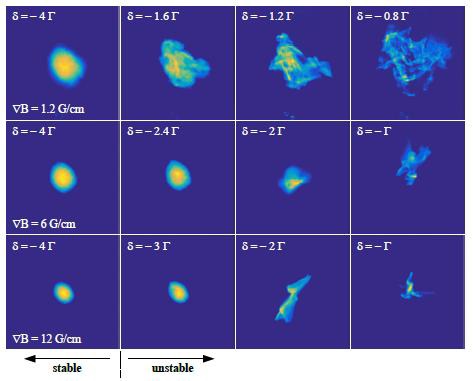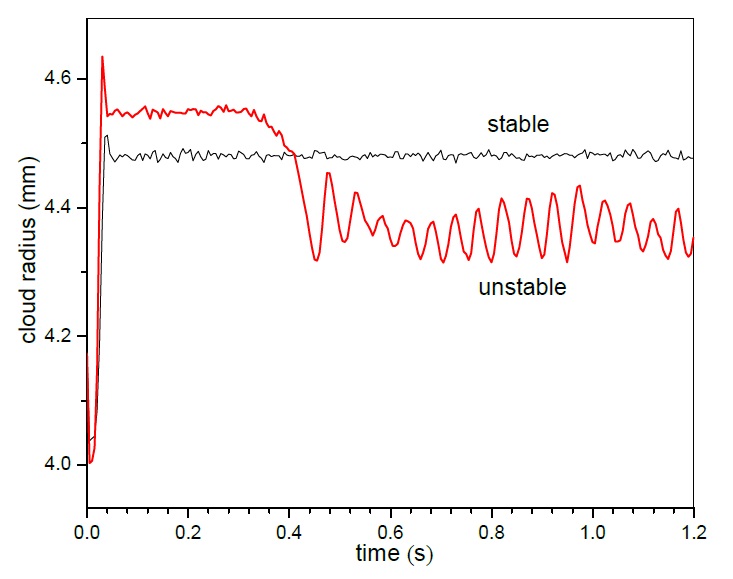Marius Gaudesius, University of Côte d’Azur
L’Institut de Physique de Nice (INPHYNI)
The aim of our research is to study self-oscillating, large ultracold atomic clouds in a Rubidium-87 Magneto-Optical Trap (MOT; a kind of trap that exposes the atoms to magnetic and light forces so in order to confine them). By tuning the confinement forces in particular ways it is possible for the atoms to enter the self-oscillatory regime.
We call the self-oscillatory regime the unstable regime, and the regime, where we observe that the atoms do not move – the stable regime.
The research involves experiments and simulations, and it aims at addressing three questions:
(1) What are the necessary parameters for entering the unstable regime?
(2) What happens in the unstable regime?
(3) What can be said about the structures in the unstable clouds?

Fig. 1: Single-shot images of the clouds (stable and unstable) in the experiments, corresponding to different MOT magnetic field gradient B and the trapping lasers’ detuning δ.
Apart from being of fundamental interest, the big motivating factor behind the research is a suggested analogy between dynamics of cold atomic clouds, astrophysical systems and plasma physics.
In the case of astrophysical systems, stars in the Hertzsprung-Russell diagram have been observed to exhibit pulsations based on the interplay between radiation pressure effects, which tend to increase the size of the star, and gravitational force, which provides a mechanism for the collapse. In similar systems, such as confined plasmas, instabilities have also been observed to occur: here long-range Coulomb interaction is countered by a confining force to avoid an explosion of the plasma.

Fig. 2: Instability of the simulated MOT. A sharp transition between stable and unstable cloud
behavior is observed when trapping lasers’ detuning δ is changed.
V
It would extremely challenging to perform studies of the full dynamics of such systems, although, on the other side, due to the existing analogies, we are presented with a great opportunity to study the hard-to-tackle systems.